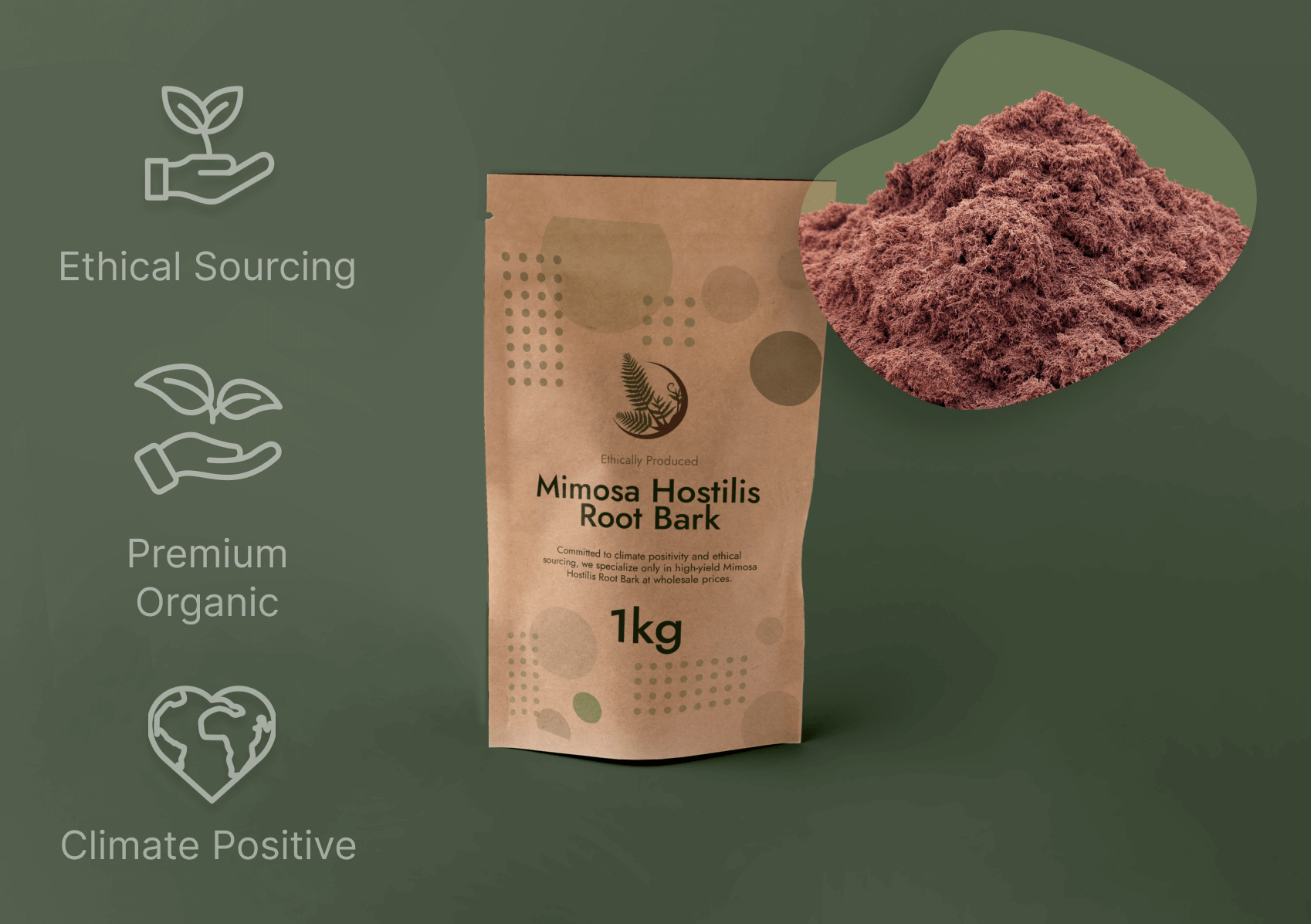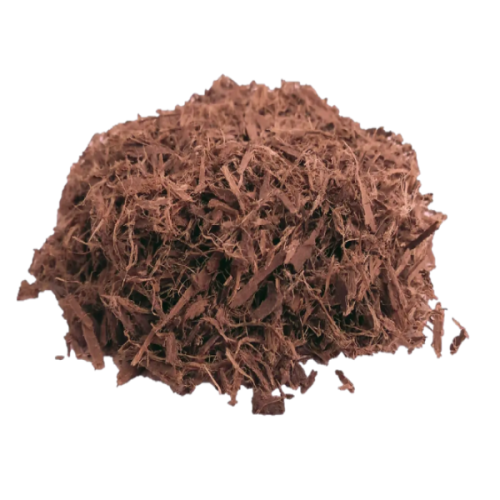Mimosa Hostilis Root Bark: A Information to Origins and Uses
Wiki Article

Mimosa Hostilis Root Bark retains a substantial location in regular techniques and modern botanical applications. This post explores the characteristics, origins, and customary queries encompassing this remarkable plant product, with a specific focus on the prized Brazillian Mimosa Hostilis Root Barks.
What is Mimosa Hostilis Root Bark?
Mimosa Hostilis, scientifically often called Mimosa tenuiflora, is usually a perennial tree indigenous to the northeastern region of Brazil and areas of Mexico. The root bark of the tree is used for centuries by indigenous communities for different practical and common applications. The interior root bark contains noteworthy concentrations of tannins, alkaloids, along with other phytochemicals that lead to its distinctive Qualities and applications.
The tree alone is remarkably resilient, capable of surviving in lousy soils and drought problems. This hardiness contributes into the strong nature in the bark and its chemical profile. When harvested sustainably, the outer root bark is carefully separated to obtain the dear interior bark, which happens to be then dried and ready to be used.
Brazilian Mimosa Hostilis Root Bark: The Gold Common
When speaking about high quality in Mimosa Hostilis merchandise, the Brazillian Mimosa Hostilis Root Barks are usually regarded top-quality from the botanical market. Several components add to this popularity:
Exceptional Developing Ailments
The precise soil composition, local weather, and ecosystem of Brazil's northeastern area build excellent disorders for Mimosa tenuiflora to create its whole chemical probable. The mineral-prosperous soils and specific pattern of rainfall and daylight in this region seem to boost the concentration of active compounds in the foundation bark.Traditional Harvesting Understanding
In areas exactly where Mimosa Hostilis has been utilised ordinarily, harvesters have developed subtle procedures for sustainable harvesting that preserves equally the tree plus the potency in the bark. This information, passed down through generations, makes certain that the bark is gathered at the proper time of 12 months and processed working with approaches that sustain its integrity.Distinctive Actual physical Attributes
Brazilian Mimosa Hostilis Root Bark normally shows a wealthy reddish-brown to purple inner bark with a fibrous, dense texture. The visual features typically function an First indicator of high quality, with seasoned users recognizing the exclusive physical appearance of bark from this area.
Popular Applications and Takes advantage of
The apps of Mimosa Hostilis Root Bark span both common and present day contexts, though It really is vital to be aware of the authorized status of these employs differs by country and jurisdiction.
Standard Craft and Follow
Indigenous communities have historically made use of Mimosa Hostilis Root Bark for making organic dyes for textiles, Along with the bark manufacturing lovely shades of purple, burgundy, and deep brown. The tannin-prosperous Attributes also produced it beneficial for leather tanning as well as other realistic purposes.Modern Botanical Investigation
Up to date desire in Mimosa Hostilis Root Bark extends to various fields of botanical research, notably learning its chemical composition and opportunity applications. Scientists have determined numerous appealing compounds inside the bark that warrant further scientific investigation.Horticultural and Agricultural Takes advantage of
In permaculture and sustainable agriculture, Mimosa tenuiflora is valued as being a nitrogen-correcting species that could enhance soil excellent. The bark alone, when processed, may be used to be a all-natural mulch or soil amendment in specified agricultural contexts.High-quality Assessment and Identification

For those dealing with Mimosa Hostilis Root Bark, being familiar with tips on how to assess excellent is essential. Significant-good quality materials, specially genuine Brazillian Mimosa Hostilis Root Barks, ordinarily displays particular traits:
The visual overall look should demonstrate a transparent distinction among the outer and inner bark, Together with the interior bark exhibiting deep, lively colors. The fabric must have a characteristic earthy, a little bit sweet aroma, absolutely free from musty or moldy notes. When processed, the bark must yield a high-quality powder although protecting its fibrous composition until grinding. Appropriately dried bark really should be brittle although not dusty, indicating proper humidity written content.
Often Requested Thoughts (FAQs)
one. What is the difference between Mimosa Hostilis Root Bark from Brazil along with other regions?
Brazilian Mimosa Hostilis Root Bark is mostly regarded as remarkable mainly because of the optimum escalating disorders in northeastern Brazil, which result in increased concentrations of active compounds. The normal harvesting methods utilised in this location also lead to the overall quality and Brazillian Mimosa Hostilis Root Barks potency of the ultimate products.2. How must I store Mimosa Hostilis Root Bark to maintain its top quality?
Keep the bark inside of a great, dim, and dry location in an airtight container. Protection from light, moisture, and Severe temperature fluctuations may help protect the bark's chemical integrity and prevent degradation of its active factors.three. Is Mimosa Hostilis an endangered species?
No, Mimosa tenuiflora is not really at present detailed being an endangered species. In fact, It is recognized for its resilient development and ability to prosper in tough situations. Having said that, liable harvesting tactics remain important to make sure the sustainability of wild populations.4. Can I improve Mimosa Hostilis outside of its native habitat?
Though Mimosa tenuiflora thrives very best in its native tropical local weather, it might be cultivated in very similar environments. The tree requires perfectly-drained soil, a good amount of sunlight, and security from frost. Having said that, the Brazillian Mimosa Hostilis Root Barks chemical profile of cultivated specimens may possibly vary from wild-harvested Brazilian materials.five. Exactly what is the legal standing of Mimosa Hostilis Root Bark?
The legal position varies significantly by region and jurisdiction. In some sites, the Uncooked bark is legal to have, although in Other folks, distinct extracts or preparations may be regulated. Always study and comply with neighborhood legal guidelines and polices just before buying or making use of any botanical material.Knowledge Mimosa Hostilis Root Bark, notably the quality Brazillian Mimosa Hostilis Root Barks, calls for appreciation of its botanical attributes, common context, and appropriate programs. Regardless of whether for exploration, craftsmanship, or botanical review, this exceptional plant materials carries on for being a matter of interest throughout several fields, however usually within just ideal lawful and moral boundaries. Report this wiki page